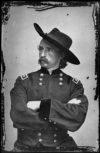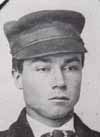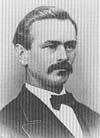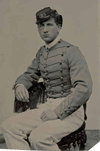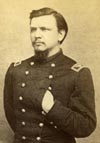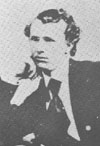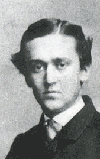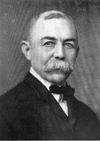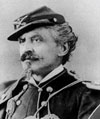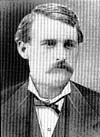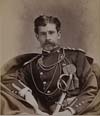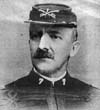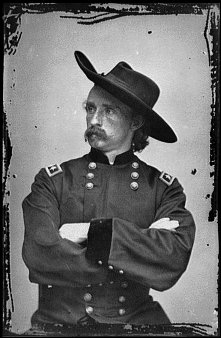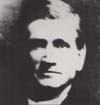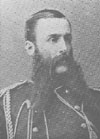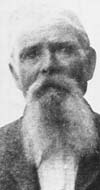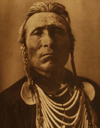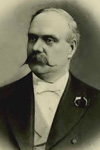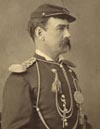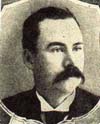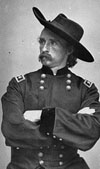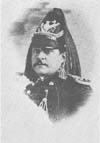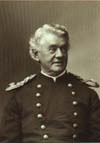William G. Abrams was born on December 1, 1840, in Baltimore, Maryland. He was a Private in Company L who was with the pack train and participated in the hilltop fight during the Battle of the Little Bighorn.
William H. Baker was born on December 3, 1848, in Golconda, Illinois. He was a Private in Company E who was killed with Custer’s Column during the battle.
Thomas James Stowers, who claimed to be a Sole Survivor of the battle, was born on December 3, 1848, in Bucks County, Pennsylvania. He was a Private in Company B who was with the pack train and in the hilltop fight.

Frank Berwald (left) was born on December 3, 1852, in Posen, Poland. He was a Private in Company E who was with the pack train and in the hilltop fight.
Frank Volkenstine, who was also known as Frank Bowers, died on December 3, 1919, in Detroit, Michigan. He was a Private in Company M who was not present at the battle because he had been dishonorably discharged on May 31, 1876, in Fort Wayne, Michigan.
John F. Donohue died in Butte, Montana, on December 3, 1924, and was buried in Mount Moriah Cemetery in that city. He was a Private in Company K who participated in the hilltop fight during the battle.

Peter Thompson (left) died on December 3, 1928, in Hot Springs, South Dakota, and was buried in the Masonic Section of West Cemetery, in Lead, South Dakota. He was a Private in Company C who was wounded in the hilltop fight. He was awarded the Medal of Honor for his actions during the battle.
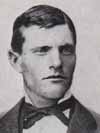
John E. Hammon (right) was born in Lynchburg, Ohio, on December 4, 1857. He was a Corporal in Company G who participated in the valley and hilltop fights.
John McCabe died on December 4, 1891, in Washington, D.C. He was a Private in Company B who was with the pack train and in the hilltop fight.
John B. Ascough died in Columbus, Ohio, on December 4, 1903, and was buried in Old Greencastle Cemetery in Dayton, Montgomery County, Ohio. He was a Private in Company D who participated in the hilltop fight.
George A. Rudolph died on December 4, 1924, in Eddyville, New York, and was buried in Saint Peters Cemetery in Rosendale, Ulster County, New York. He was a Private in the Band, so he was not present at the battle. He was on detached service at Powder River, Montana.
Charles Henry Bishop died in East St. Louis, Illinois, on December 4, 1929, and was buried in Greenwood Cemetery in Fairview Heights, St. Clair County, Illinois. He was a Private in Company H who was wounded during the hilltop fight.
John Samuel Ragsdale died on December 4, 1942, in Dayton, Ohio, and was buried in the Dayton National Cemetery there. He was a Private in Company A who was not present at the battle due to detached service.
George Armstrong Custer (left) was born on December 5, 1839, in New Rumley, Ohio. He was an 1861 graduate of the United States Military Academy at West Point who was in command during the battle.
Isaac Fowler (right) of Company C died on December 5, 1881, in Union City, Indiana, and was buried in the Union City Cemetery there. He was a Private in Company C who was with the pack train and in the hilltop fight.
Martin McCue died on December 6, 1923, at Barnes Hospital in Washington, D.C., and was buried in the Soldiers’ Home National Cemetery there. He was a Private in Company K who participated in the hilltop fight.
Henry August Lange was born in Hanover, Germany, on December 7, 1851. He was a Private in Company E who was with the pack train and in the hilltop fight.
Andrew Humes Nave (left) died on December 7, 1924, in Knoxville, Tennessee, and was buried in Highland Memorial Cemetery there. He was a Second Lieutenant with Company I who was not present at the battle due to illness.
